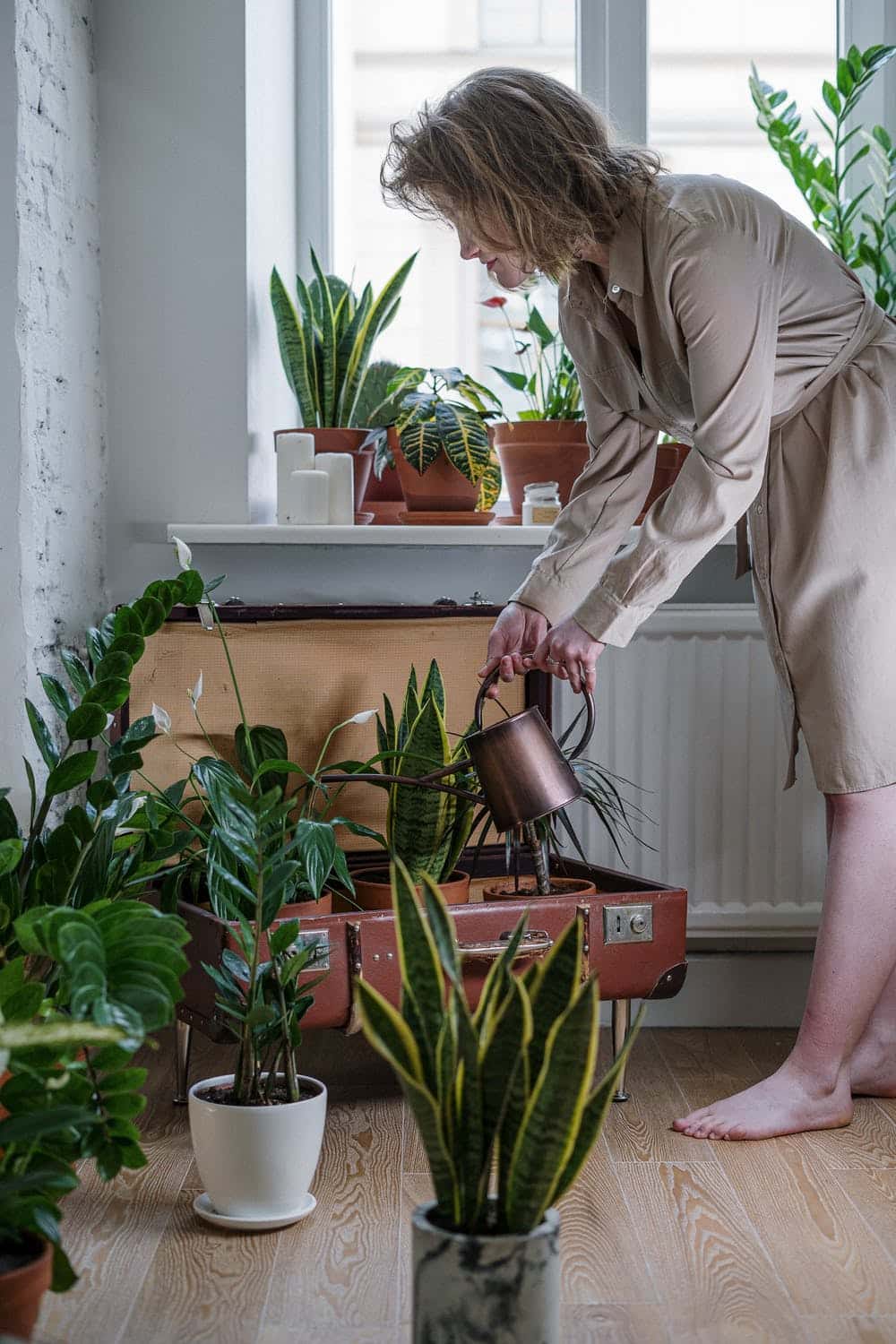How to maintain indoor plants
You can assume you don’t have a green thumb, or you’re not cut out for growing plants if you’ve ever had an Indoor plant that’s quickly withered and wilted. Well, we’re here to ensure this isn’t the case for you! The reality is that everyone can be a good owner of a farm, and, we promise, it isn’t complicated. In this post, from irrigation to sunlight requirements to fertilizer, we will guide you through everything you need to know to care for your indoor plants.
1. How to Water Indoor Plants?
Providing consistent water for your plants. Keep stacking soil moist but not wet
It will damage the plant’s roots and prevent the plant from growing if your soil is either too dry or overwatered. Plants with lush, dense leaves need more water than plants with waxy or leathery leaves. For all indoor plants, there is no particular frequency. Instead, by researching its particular form, all you need to do is decide what kind of plant you have and follow instructions on how much to water it.
To assess how wet it is below the surface, stick your finger in the dirt.
You will tell if your plant needs more water if you stick your finger into the soil up to your knuckle. You don’t need to water it if the soil feels moist. Over-watering will result in the root you need to repair being rotted. If it feels dry, then you will probably need to water it.
Using water which is at room temperature
The best temperature to store the water you use to water your plants is 68 ° F or 20 ° C. To decide the water temperature, you can use a thermometer or leave the water out after you pour it, allowing it to become room temperature.
To maintain hydration levels in your soil, use a hand-held moisture meter.
The most precise way to assess how hydrated your plants are is with moisture meters. To send you a lesson on how hydrated your soil is, the process measures the underlying soil.
Choose a pot with decent drainage.
The amount of drainage in the pot that you hold your plant in is significant because it can hurt or destroy your plant over or under-watering. Ensure that at the bottom of your pot, there are drainage holes.
2. Caring for your plant indoors
Pick an area that gets sufficient sunlight in your home
To undergo photosynthesis, plants require sunlight. The quality, length, and intensity of light all influence the growth of a plant.
Don’t move a lot of your plants around.
Plants acclimate very slowly to their surroundings, so it’s best not to move them around a lot. This also means placing it in a spot where there will be a dramatic temperature change.
Increase the amount of moisture in a room.
Some plants may be well served by dry air, such as cacti, but most plants require humidity, mostly tropical plants. You should buy a cool-mist room humidifier and make sure it’s close enough to provide the plant with moisture in the air but not to wet the foliage or flowers.
Filling a tray with pebbles is a cheaper alternative to using a humidifier. Just below the top of the pebbles, add water. It will humidify the space as the water evaporates. You can also use distilled water to fill a spray bottle and mist the plants to give them extra moisture. Wilting browned leaves and poorly growing flower buds are indicators that your plant is suffering from low moisture. Grouping the plants helps to maximize moisture.
Fill your pot with a stable, 10-10-10 fertilizer.
Most houseplants grow on 10-10-10 balanced fertilizers. House plants require the nutrients from potting soils and fertilizers to thrive. The plant will ultimately die if you do not report the plant or apply new nutrients to the soil. The first number stands for phosphorus, the second for nitrogen, and the third for potassium.
Prune the plant regularly.
Some plants must have their roots pruned at different times, so it is necessary to read up on how frequently your plant should be pruned. A plant that is not pruned will grow out of reach, and a plant’s roots can outgrow its pot or vase. To keep it safe, and to prevent yourself from having to replant, periodically prune your plant. Take off branches or stems that are dead and can attract bugs. To facilitate the growth of a fuller, more vigorous plant, prune above the leaf node at a 45 ° angle.
Do not tip your houseplant with tea or coffee.
Putting your potted plant with coffee or tea can attract flies that can eat away at your indoor plant. Sugars also make this a suitable breeding ground for such insects. Although some individuals believe that adding coffee grounds is suitable for plants, they can kill them to plants with a low acid tolerance.
3. Understanding Your Plants
Learn the classification of your farm.
You will find several online encyclopedias that will explain how you should look after the particular type of houseplant you own, including recommended humidity levels, recommendations for exposure to sunlight, and guides for watering. Since several houseplants vary, what is best for your particular form of houseplant is essential to find.
Realize that not all indoor or houseplant plants on sale are long-term residents.
Several of the plants in the shop do not belong in the indoor climate as house plants. Many people unknowingly buy these species, and they are likely to die. Individuals are frustrated and never want to repurchase indoor crops.
Determine whether the plant is a plant with green foliage or a plant with flowers.
There are different green leaf plants and flowering houseplants that require various nutrients and different levels of water and sunlight. Many of the types of indoor plants that the buyer of houseplants finds are part of a broad community called angiosperms or flowering plants. Not all angiosperm, however, create attractive flowers or desirable blooms. Also, many plants never reach the fruiting age if preserved indoors.
Choose an easy-to-care plant.
Some tropical plants need complex conditions to survive. In contrast, other plants are low maintenance, robust, and simple to care for, such as geraniums, areca palms, sago palms, pothos, and cast-iron plants. Most cacti and succulents also offer great shapes and foliage variety and are also simple to grow.





